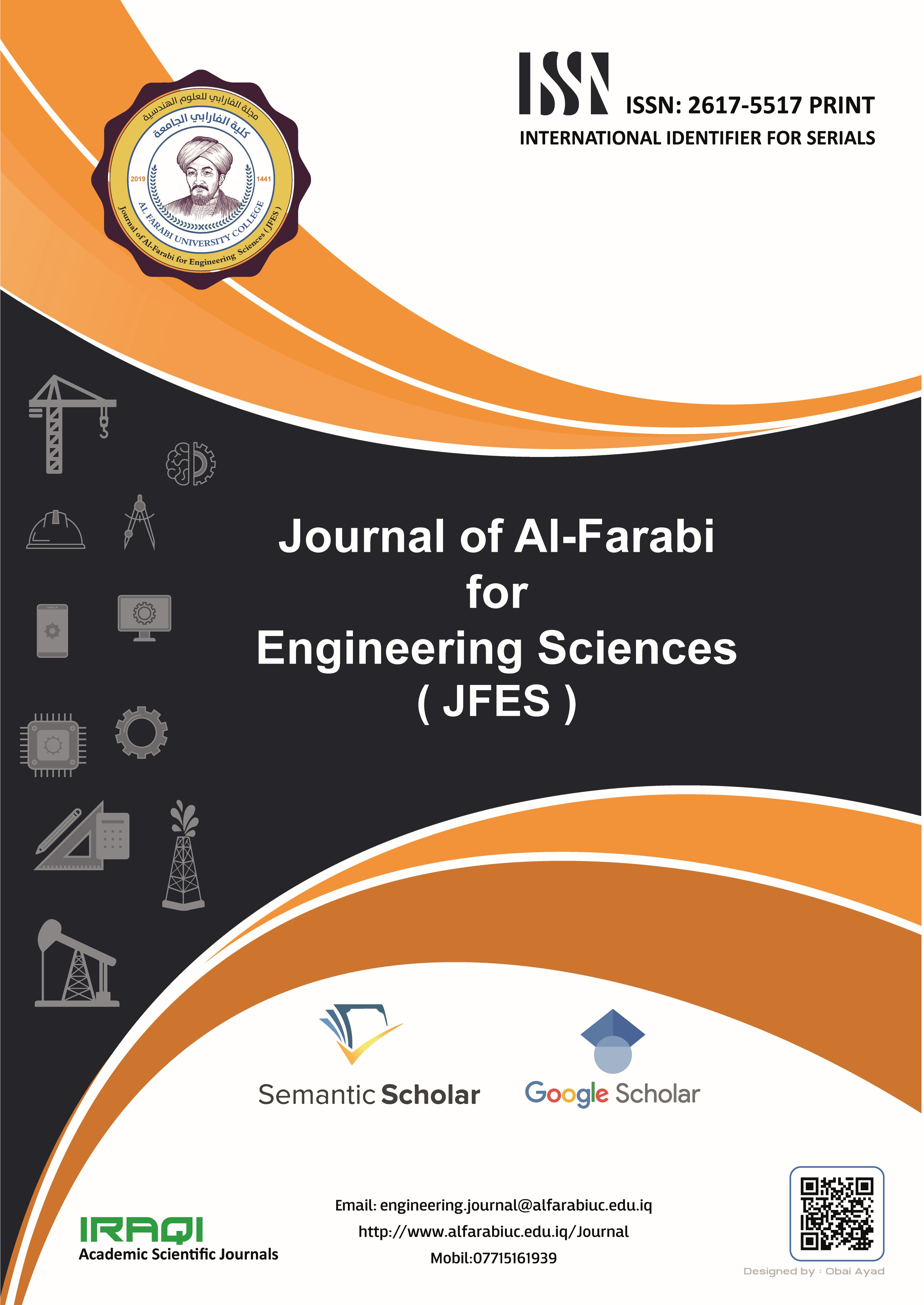The impact of structural inversion on the hydrocarbon system, northwest Mosul area, Case study Sasan (Sarjoon) Oil Field.
DOI:
https://doi.org/10.59746/jfes.v1i1.15Keywords:
Sasan Structure, Inversion, Breaching, Remigration, Prospective LeadsAbstract
Sasan field is in Nineveh governorate, 46 Km northwest Mosul city. The present Sasan
structure was discovered from surface mapping and 2D seismic defined the Upper Cretaceous
reservoir but due to poor data quality, any estimate of oil in places are highly uncertain. Sasan
structure from seismic shows Block-Faulted anticline covering a small area (Sasan East). Several
normal faults appear to separate SA-2 from SA-1 affected the hydrocarbon system in these two
wells. The more possible realistic interpretation is an inverted graben, thick Shiranish Formation in
Sasan wells support this interpretation.
The model suggest that normal faults created the accommodation during Late Cretaceous (Sinjar
trough) and subsequent Tertiary compression uplifted the depocenter creating the topographic
depression which interpretated as a fault propagation fold. The last compressional structures can
only have been filled with remigrated petroleum from breached, older traps, earlier structures could
have been filled by migration from an actively generating source rocks. The exploration potential in
the old Sasan structure configuration is good but it is still an exploration play not a commercial oil
discovery, although oil is present in Shiranish, Hartha/Mushora and Wajnah formations but not clear
if it is recoverable.
Gas present in deeper formations, both the oil and gas traps are breaching traps. The best exploration
targets should, therefore, be old structures, produced by Late shoulders of Sinjar basin contain many
such leads as the prospective leads nominated A, B, C and D.
Second best are old structures which have been partially restructured and whose closure has been
modified, but not breached. The prospective reservoirs will be at Late Cretaceous, Early Cretaceous
and Late Triassic.
References
Al-Jumaily,R. and Dr. Domaci,L.,CSc. Geological and Tectonic Position of Jebel Sasan-Jebel Ishkaft Area, NW of Tel Afar, Iraq. Journal of the Geological Society of Iraq, Vol.IX,1976, Pp.101-115.
Final Report on Well Sasan No.1. Mosul Petroleum Company Limited, Sep.1958. pp. 29
Seismic Section for Sasan-Ishkaft Area, O.E.C.2006.
Seismic Section for Sasan Structure ( Sasan Area),O.E.C.2006
Final Geological Report on Well Sasan No.2, I.N.O.C.1976. pp.13.
Buday, T., 1980. The Regional Geology of Iraq. Vol. 1. Stratigraphic and Paleogeography. Puplications of GEOSURV. Baghdad. 445p.
Paleo and New- Tectonics of the Mosul fault and its Impact on the Tectonics of the Foreland Area of Iraq. Iraqi National Journal of Earth Science, Vol.13, No. 1, Pp.59-74. 2013
Aqrawi, A. A. M., Goff J. C., Horburu, A. D., and Sadooni, F. N., 2010. The Petroleum Geology of Iraq. Printed in Great Britain by Cambrian Printers
Ameen M. S., 1992. Effect of Basement Tectonic on Generation, Migration, and Accumulation in Northern Iraq, The American Association of Petroleum Geologists Bulletin, Vol. 76, No. 3, pp. 356 - 370. DOI: https://doi.org/10.1306/BDFF87FE-1718-11D7-8645000102C1865D
Jassim, S. Z., Karim, S. A., Basi, M., Al-Mubarak, M. A., and Munir, J., 1984. Final report on the regional geological survey of Iraq. Vol. 3. Stratigraphy. internal report. Geological Survey of Iraq. Jassim, S. Z., and Goff, J. C., 2006. Geology of Iraq. First edition. Printed in the Czech Republic.
Fouad, S. F. A. 2015. Tectonic Map of Iraq Scale 1: 1000 000, third edition. Iraqi Bulletin of Geology and Mining, 11(1): 1-7.
Ibrahim, A. O., 1985. Tectono-stratigraphic Investigation in the Southern Reaches of the Simple Folds Zone of Iraq, Unpub. M Sc thesis, Univ. of Mosul, Iraq. 218 p.
Kadir, M. M., 2008. Geodynamic Study of the Northeastern Margin of the Arabian Plate, Unpub. Ph. D thesis, University of Mosul, Iraq, 206 p.
Nadir, P. Y., 1983. Geological-Structural Study of West Mosul - Telafar with Details on Shaikh Ibrahim Anticline. Unpub. Report, IPC, Iraq, 36 p.
Numan, N. M. S., 1984. Basement Control of Stratigraphy Sequences and Structural Pattern in Iraq, Jour. Geol. Soci. Iraq, Vol. 16-17, pp. 8 - 24.
Sharland, P. R., Archer, R., Casey, D. M., Davies, R. B., Hall, S. H., Heward, A. P., Horbury, A. D. and Simmons, M. D., 2001. Arabian Plate Sequence Stratigraphy, GeoArabia special publication Vol. 2, 317 p.
Ziegler, M., A., 2001. Late Permian to Holocene Paleofacies Evolution of the Arabian Plate and its Hydrocarbon Occurrences, GeoArabia, Vol. 6, No. 3, pp. 445 - 504. DOI: https://doi.org/10.2113/geoarabia0603445
Numan, N. M. S., and Al-Azzawi, N. K., 2002. Progressive versus paroysmal Alpine folding in Sinjar anticline Northwestern Iraq. Iraqi Journal of Earth Science, 2 (2): 59-69. DOI: https://doi.org/10.33899/earth.2002.45672
Sadooni, F. N., 1995. Petroleum prospects of upper Triassic carbonates in Northern Iraq, Journal Petroleum Geology, 18:171-190. Van der Pluijm, B. A., and Marshak, S., 2004. DOI: https://doi.org/10.1111/j.1747-5457.1995.tb00896.x
Al-Azzawi, N. K. B., 2003. The Structural Development of Fold Shape in the Foreland Belt of Iraq and Its Tectonic Implications, Unpublished Ph.D Thesis, College of Science, University of Mosul, Iraq, 208 p.
Boulton, S. J., 2009. Record of Cenozoic Sedimentation from the Amano’s Mountains, Southern Turkey: Implications for the Inception and Evolution of the Arabia–Eurasia Continental Collision, Sedimentary Geology, Vol. 216, DOI: https://doi.org/10.1016/j.sedgeo.2009.01.008
pp. 29 - 47.
Hardenberg, M. F., 2003. Tectonics and Sedimentation of Early Continental Collision in the Eastern Mediterranean (Northwest Syria), Unpub. Ph. D thesis, Univ. of Edinburgh, UK, 322 p.
Brew, G., Litak, R., Barazangi,M.and Sawaf,T., Tectonic Evolution of Northeast Syria: Regional Implication and Hydrocarbon Prospects.GeoArabia,Vol.4,No.3.1999.Pp.289-318. DOI: https://doi.org/10.2113/geoarabia0403289
Oil Exploration Company (O.E.C), 2009. Interpretation of Seismic Data of Kurra Chine Reflector in Alan Field. Oil Exploration Company (O.E.C), 2010.
Aberystwyt. Awdal, A., Healy, d., and Alsop, G. I., 2016. Fracture patterns and petrophysical properties of carbonates undergoing regional folding: a case study from Kurdistan, N Iraq, Marine Petroleum Geology, 71: 149- 167. DOI: https://doi.org/10.1016/j.marpetgeo.2015.12.017
Burberry, C. M., 2015. The effect of basement fault reactivation on the Triassic-recent geology of Kurdistan, North of Iraq. Journal of petroleum geology, 38:37-58. CGG, 1974. DOI: https://doi.org/10.1111/jpg.12597
Edilbi, A. N., Kolo K., Muhammed, N. R., Yasin, S. R., Mamaseni, W. J., and Akram, R., 2019. Source rock evaluation of shale interval of Kurra Chine Formation, Kurdistan Region-Iraq: An organic geochemical and basin modeling approach. Egyptian Journal of Petroleum, 8: 315-331. DOI: https://doi.org/10.1016/j.ejpe.2019.06.003
Fustic, M., Bennett, B., Huang, H., and Larter, S., 2012. Differential entrapment of charge oil-new insights on McMurray Formation oil trapping mechanisms. Marin and Petroleum Geology, 36: 50-69. Gussow, W. S., 1954. DOI: https://doi.org/10.1016/j.marpetgeo.2012.05.004
Differential entrapment of oil and gas – fundamental principles. American Association of Petroleum Geologists, 38: 816 – 853.
Update the Structural map of Kurra Chine Reflector using seismic data. Numan, N. M. S., 1997. A plate tectonic scenario for the Phanerozoic succession in Iraq. Iraqi Geological Journal, 30 (2): 85-119.
Dunnington, H. V., 2005. Generation, Migration, Accumulation, and Dissipation of Oil in Northern Iraq, GeoArabia, Vol. 10, No. 2, pp. 39 - 84. DOI: https://doi.org/10.2113/geoarabia100239
Lowell, J., D. Structural Styles in Petroleum Exploration, OGCI Publication, Tulsa, Fifth Printing -July,2003.459 P.
Gilchrist, J.R., Cater, J.M.L., Ries, A.C., Tucker, J.W.,1988. Structural styles in the foothills and foreland areas of the Taurus Overthrust Belt, SE Turkey (Abstract: petroleum in thrust belts conference, Bordeaux).
Lovelock, P.E.R., A review of tectonics of the northern Middle East Region. Geological Magazine, Vol.121, No.6., pp.589-598. DOI: https://doi.org/10.1017/S0016756800030727




